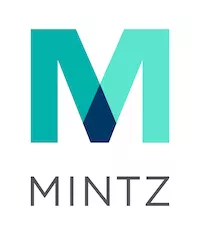- within Law Practice Management topic(s)
On February 8, 2022, U.S. District Court Judge Maryellen Noreika of the United States District Court for the District of Delaware granted the plaintiff's motion to exclude defendant's expert testimony for being "based on an erroneous legal theory" in a suit alleging defendants' proposed generic Abbreviated New Drug Application ("ANDA") product would infringe Exela's patents under the Hatch-Waxman Act. Exela Pharma Sciences v. Eton Pharms., No. 20-cv-00365 (D. Del. Feb. 8, 2022). In so doing, Judge Noreika held that where the ANDA specification speaks to the claim limitation at issue, the ANDA specification, not other materials submitted to FDA describing the proposed ANDA product, controls the infringement analysis. Only where the ANDA specification itself does not speak to a claim limitation should the court consider other materials describing the ANDA product, such as biobatch data and actual samples, in order to assess infringement.
In early 2020, Eton submitted an ANDA seeking approval to market a generic version of Exela's drug, Elcys®. Exela sued, alleging infringement of six patents, including ones with asserted claims directed to a specific maximum level of aluminum and specific quantity ranges of lead and mercury in the drug product. Eton's ANDA specification, if approved, would allow Eton to market the proposed ANDA product with aluminum, lead, and mercury levels falling within Exela's claimed ranges. However, Eton's expert opined that the ANDA product biobatch data and sample exhibit batches submitted in the ANDA demonstrate that the proposed ANDA product will not actually contain aluminum, lead, or mercury levels within the claimed ranges, despite infringing amounts being permitted by the ANDA specification. Eton thus argued that the court should look beyond the ANDA specification and consider additional ANDA information when determining whether the ANDA product will infringe Exela's patents. Exela disagreed, arguing that the expert's approach is unreliably based on an erroneous legal premise, and moved to strike those portions of the expert testimony under Rule 702 of the Federal Rules of Evidence.
Judge Noreika agreed with Exela, applying the Federal Circuit's decision in Sunovion Pharms. v. Teva Pharms. USA, which held, "[w]hat a generic applicant asks for and receives approval to market, if within the scope of a valid claim, is an infringement." The court further explained that "the court should examine other materials [beyond the ANDA specification] to look at the product that the generic company is likely to sell when the ANDA specification is silent on that limitation." Judge Noreika distinguished the case at hand from prior suits where courts examined ANDA materials other than the specification because those courts looked beyond the ANDA product specification when those specifications did not speak to the claim limitations at issue and thus did not "directly resolve the infringement question." As noted by the Federal Circuit in Sunovion, courts should evaluate ANDA product infringement under the Hatch-Waxman Act via the ANDA specification, rather than evidence that the ANDA product may not embody the full scope of that specification, because of the possibility that the applicant could later market an approved and potentially infringing product within that broader disclosure. Doing otherwise tends to "unnecessarily defer[] resolution of the infringement issue" until such future ANDA product release, undermining the Hatch-Waxman framework's goal of evaluating infringement early on.
Judge Noreika's decision in this case reinforces the Federal Circuit's holding in Sunovion and serves as a reminder that ANDA product infringement is primarily assessed by comparing the asserted claims with the ANDA specification, rather than other ANDA submission materials further describing the ANDA product.
The content of this article is intended to provide a general guide to the subject matter. Specialist advice should be sought about your specific circumstances.





